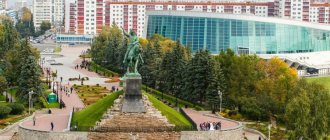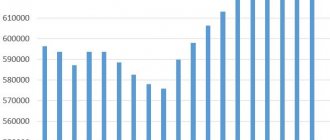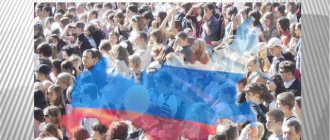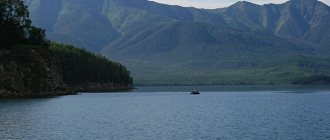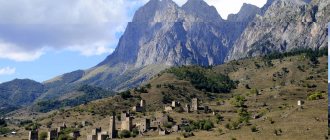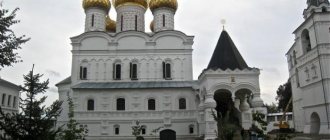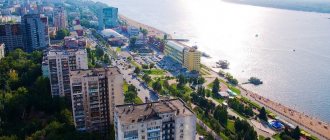The territory of the Ryazan region has been inhabited since ancient times. The founding of the region's capital, Ryazan, dates back to the 11th century, and most of the large cities and towns operating today appeared in the 16th and 17th centuries. Despite such a long history of the formation of the region, it cannot be called large in number. According to information at the beginning of 2022, 1,114,149 people live here, which puts the region only in 46th place in the all-Russian ranking. With an area of 39,605 km² - 58th position in Russia, the density is also quite low: 28.13. For comparison, in the neighboring Tula region this figure is 57.59, and in the Lipetsk region - 47.58.
The largest cities in the Ryazan region by population
There are only 12 cities in the Ryazan region. There are no millionaires among them, and the capital of the region, Ryazan, boasts only 538,962 residents. Next in the ranking of the largest settlements in the region is the small town of Kasimov, where 17 times fewer people live: 30,696. In another 7 cities, the number of inhabitants ranges from 10,340 to 26,329, and in the smallest, Spassk-Ryazansky, which closes the ranking, only 6,555 live. Because of this imbalance, the region risks becoming monocentric, since almost half of the population lives in the capital, which is why the remaining settlements practically do not develop.
There are also 21 urban-type settlements. Interestingly, three of them have more inhabitants than cities. These include:
- Shilovo - 14,531;
- Lesnoy - 7,687;
- Tuma - 5,899.
List of the most populous cities in the Ryazan region:
- Ryazan - 538 962.
- Kasimov - 30,696.
- Skopin - 26,329.
- Sasovo - 25,747.
- Ryazhsk - 21,623.
- Rybnoye - 19,265.
- Novomichurinsk - 16,852.
- Korablino - 11,272.
- Mikhailov - 10,340.
- Spassk-Ryazansky - 6,555.
Population of Ryazan for 2022. Number of residents of Ryazan
Data on the number of city residents are taken from the Federal State Statistics Service. The official website of the Rosstat service is www.gks.ru. The data was also taken from the unified interdepartmental information and statistical system, the official website of EMISS www.fedstat.ru. The website publishes data on the number of residents of Ryazan. The table shows the distribution of the number of residents of Ryazan by year; the graph below shows the demographic trend in different years.
Links to official documents and resources on the population census are marked with a [*] sign; when you hover your mouse, you will see the title of the document.
| Number of residents of Ryazan | Years |
| 519,100 people | 2003 |
| 513,300 people | 2005 year |
| 510,006 people | year 2009 |
| 509,392 people | 2010 |
| 526,092 people | year 2012 |
| 527,795 people [*] | year 2013 |
| 530,341 people [*] | year 2014 |
| 532,772 people | 2015 |
| 534,762 people | 2016 |
| 537,622 people | 2017 |
| 538,962 people | 2018 |
| 539,789 people | 2019 |
| 539,290 people | 2020 |
Ryazan is large by Russian standards
Despite the lack of million-plus status, by the standards of the country Ryazan is a fairly large populated area. 538,962 people live here, which puts it among the thirty largest in the Russian Federation. The density is average compared to other regional centers, but, of course, does not reach the capital:
- Ryazan - 2,406;
- Lipetsk - 1543.95;
- Tula - 3311.89;
- Moscow - 4925.19.
The first settlements here appeared in the Paleolithic era, and the modern city of Ryazan was founded in 1095. Despite the significant contribution of the settlement to the history of the country and its changing population over time, it could not be called large: by 1811, only 7,800 people lived here. The peak increase in the number of city residents occurred during the Soviet years: from 49,100 people in 1913, the figure reached 527,000 in 1991. Ryazan is the industrial center of the region, accounting for 60% of production. The most important industrial facility is a large oil refinery. The capital of the region is home to representative offices of many Russian and foreign companies and higher educational institutions. The Ryazan transport hub connects the Urals and Moscow, which ensures high traffic, including heavy trucks.
On the central streets of the city, due to the lack of dedicated lanes and improper parking, traffic jams are regularly observed, which increase significantly in the summer, when many tourists come to the ancient city. In addition, the presence of a large Ryazan agglomeration plays a rather significant role in the formation of congestion on exits from the city and the creation of a feeling of crowdedness in the center. Every day, thousands of residents of the suburbs, where the environment is better and housing is cheaper, go to work in the regional center, increasing its number several times during the daytime. All this creates a negative environmental situation, the main “contribution” to which is made by exhaust gases. In second place are emissions from industrial enterprises.
The population of the Ryazan region is decreasing, and some areas are already inferior in population to large villages.
Back on January 25, Ryazanstat announced its estimate of the population of the Ryazan region by the beginning of 2022: 1 million 114 thousand 312 people. This figure was obtained based on previous estimates and the results of the 2010 census, to which all births were added and from which all deaths were subtracted, and also took into account population movements.
In 2022, 16 thousand 389 people officially moved to the Ryazan region (excluding illegal immigrants) from other regions of Russia, and 17 thousand 887 people officially left for other parts of the country. International migration amounted to 4,324 arrivals and 3,375 departures, and almost 98% was the movement of citizens of other CIS countries.
Depopulation
The term "Depopulation" means a decrease in population. There is a stereotype in the public consciousness: until the 1990s, the population grew, and then began to decrease. This is true, but for Russia as a whole. But in the Ryazan region the population is declining all the time; now it is at the level of 1954. Here are the data from all censuses over the last 60 years:
- 1959 - 1 million 444 thousand 755 people;
- 1969 - 1 million 411 thousand 590 people;
- 1979 - 1 million 361 thousand 839 people;
- 1989 - 1 million 345 thousand 924 people;
- 2002 - 1 million 227 thousand 910 people;
- 2010 - 1 million 154 thousand 114 people.
The region's population declined even when the birth rate was higher than the death rate. Why? Because the Ryazan population migrated. The children grew up, went to study outside the region and stayed there. Various good specialists left for a better life in Moscow, other big cities, as well as all sorts of large ones, where salaries were higher. The countryside was especially deserted: in 1959, 70% of Ryazan residents lived there, in 1979 - already 42%, and in 2010 - 29%.
Loneliness of a large circle on the map
It is interesting that among our neighbors this process was more “softer”. Here are the statistics on this matter.
There are five cities with a population of over 50 thousand people in the Tula region (Tula, Novomoskovsk, Donskoy, Aleksin, Efremov), in the Vladimir region - five (Vladimir, Kovrov, Murom, Alexandrov, Gus-Khrustalny), in the Nizhny Novgorod region - seven (Nizhny Novgorod , Arzamas, Dzerzhinsk, Kstovo, Sarov, Vyksa, Pavlovo), in the Penza region - three (Penza, Kuznetsk, Zarechny). There are two such cities even in Mordovia (Saransk, Ruzaevka), Tambov (Tambov, Michurinsk) and Lipetsk regions (Lipetsk, Yelets).
And only Ryazan is alone in its region: only 30.7 thousand people live in the second largest city in the region, Kasimov.
Moscow and Ryazan “people suckers”
In the 20th century, Ryazan worked like a large mechanism for sucking residents out of the countryside - a “people sucker”. It was in Ryazan that, from the late 1950s, large industrial enterprises and tens, and then hundreds of thousands of square meters of housing began to be built annually.
From 1959 to 1979, the city more than doubled (from approximately 215 to 453 thousand people). And even in the 1990s, when the crisis began and the factories stopped, people still flocked to the regional center.
In 1991, 527 thousand people lived in it, and in 1999 - 531 thousand. After that, from 2002 to 2009, the population decreased little by little (to 510 thousand in 2009), but then the graphs shot up again: by 2022, there were 538 thousand 962 residents of Ryazan.
But in the outback everything is still bad. Agriculture is developing, and where 200 collective farmers previously worked, now 40 employees of a branch of an agricultural holding can cope - and they produce not less, but more. Where do the rest go? Old people die, young people leave.
For example, by the beginning of 2022, only 5,158 people lived in the Pitelinsky district. The whole region had less population than the village of Polyany alone (6623 people) near Ryazan! District centers, one after another, become “two-thousanders”: in Zakharov during the 2010 census there were 2,739 residents, in Chuchkovo (already in 2017) - 2,619, in Pitelin - 2,043.
Through the spacious fields and forests of the eastern part of the Ryazan region, you can drive an SUV for many kilometers and not see a single soul. On topographic maps, next to the names of villages, the following is increasingly written in parentheses: “non-residential.”
The turning point will come if...
But the situation can be fixed. The economic factors that have depopulated the Ryazan region have been in effect for the last decade. We are seeing more and more people, no matter where they live, working remotely using the Internet. And it’s not just programmers: even good fashion designers have started selling their exclusive clothes through online stores. If by 2030 Russia does become a digital country, many salaries in the city and countryside will be equal - because the employer most often will not even know where his “remote employee” lives.
But one more factor will remain: convenience of life. As long as there are no good roads, good communications, gas supply, schools and kindergartens, hospitals, service services, or various retail outlets in rural areas, there will be no revival of the village. Today’s axiom “First, residents of a populated area need to earn money in order to then live well” will be replaced by a new truth - “If the residents of a populated area do not live well, soon there will be no one there to earn money.”
There is a “Sustainable Development of Rural Territories” program that is updated every few years, both federal and regional. They provide for large investments in rural infrastructure: roads, first aid stations, sports facilities. Of course, when looking at most villages away from federal highways, it becomes clear that there is no end to the work.
In April 2022, a meeting was held in Ryazan on the implementation of the national project “Demography” in the region, at which Governor Nikolai Lyubimov said that funding for this project until 2024 would amount to 9.9 billion rubles.
We will be able to see where all this will lead in 2021-2024. By this time, according to the authorities' calculations, earnings in young families should increase and the birth rate should rise.
Kasimov - the number is inexorably decreasing
Second place in the ranking is occupied by small Kasimov, where 17 times fewer people live. It is also one of the oldest cities in Russia, founded in 1152. It stands on the banks of the Oka River, 262 km from Moscow and 165 km from the regional capital. In the mid-19th century, there were about 10,000 residents, and during the period of Soviet power, the figure tripled, reaching the maximum value for the entire period of the settlement’s existence of 37,900 people in 1992.
Then a steady decline began, which continues to this day, and at a fairly serious pace for such a small city. At the beginning of 2022, the population was 30,696 people, which means it has fallen by almost 20% over 27 years. The reason is not only the demographic crisis, but also the migration of young people to larger Ryazan and Moscow. Today, industrial enterprises continue to operate in the city, the largest of which is the Prioksky Non-Ferrous Metals Plant. There are also many historical monuments here, but income from tourism does not have a major economic impact.
Skopin - the city is developing towards tourism
The third place in the ranking is occupied by Skopin, where there are 4,000 fewer residents than in Kasimov. This is a small provincial town with a density of only 852.07, so the problems of megacities or even large regional centers are unusual for it. It has the status of a city of regional significance, to which 5 other settlements are subordinate, but the buildings here are predominantly low-rise or private.
There are two large enterprises here that shape the city’s economy and provide the local population with jobs: the Mining Equipment Plant and the Automotive Aggregate Plant, the largest manufacturer of automotive components in Russia. It existed for a long time, causing irreparable harm to the ecology of the region. During its existence, about 1.5 tons of waste were buried in burial grounds near Skopin, which contained approximately 200 billion doses of toxic arsenic, lethal to any person. The settlement is an important transport hub: the Caspian highway and railway lines of federal significance serve strong passenger and cargo flows. Skopin is also known as the center of Russian pottery, which attracts tourists from all over the country. Thanks to the development of tourism infrastructure, since 2022 there has been an increase in the number of city guests who want to get acquainted with its historical past and folk crafts.
